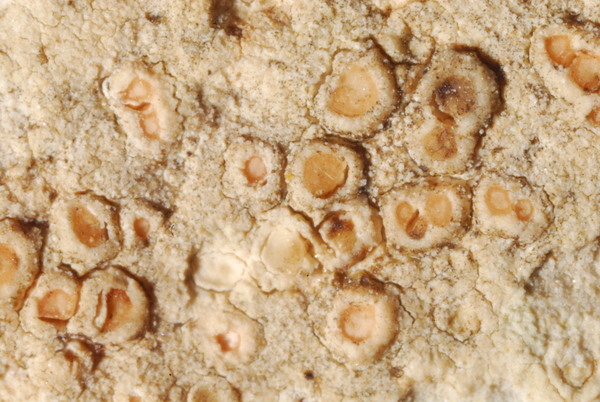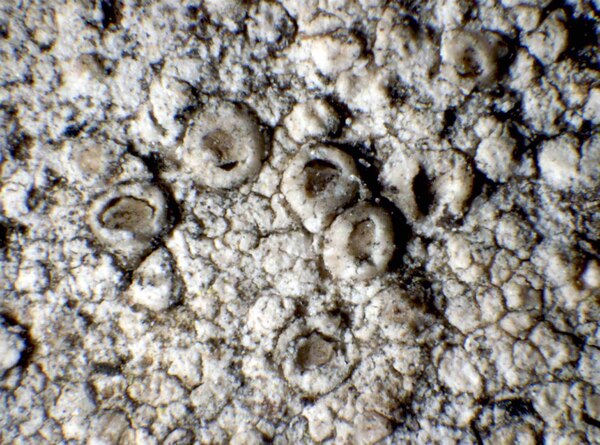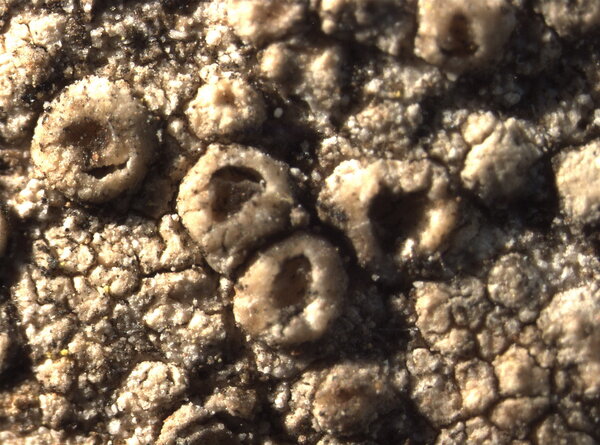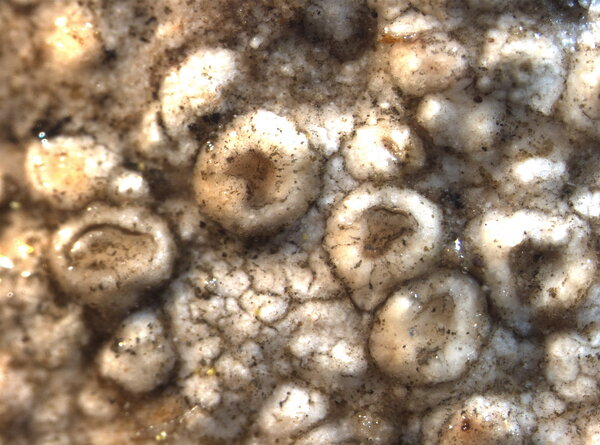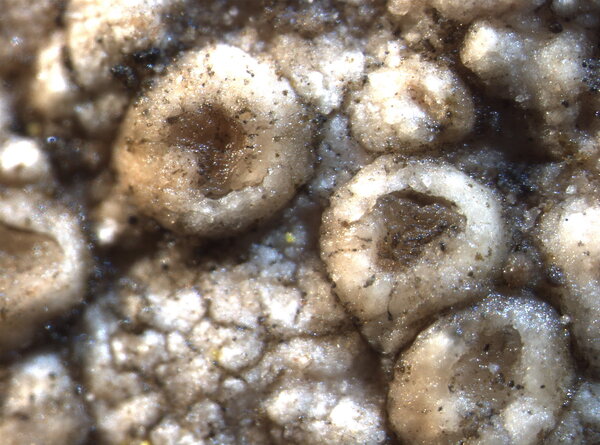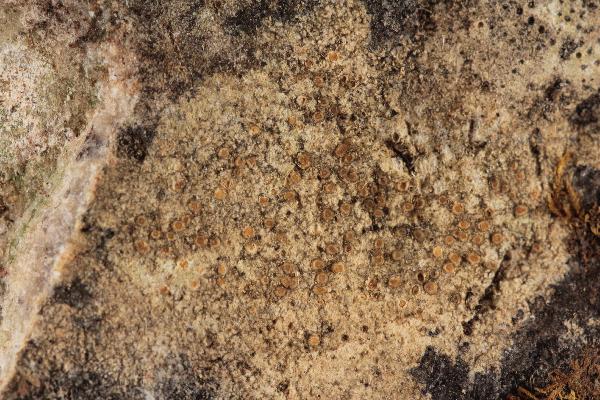Hymenelia similis (A. Massal.) M. Choisy
Bull. Mens. Soc. Linn. Lyon, 20: 133, 1951. Basionym: Pinacisca similis A. Massal. - Neagen. Lich.: 5, 1854.
Synonyms: Aspicilia isabellina De Not. ex Jatta; Aspicilia similis (A. Massal.) Anzi; Ionaspis similis (A. Massal.) Jatta; Lecanora carneopallens Nyl.; Lecanora similis (A. Massal.) Nyl.
Description: Thallus crustose, endosubstratic to thinly episubstratic, continuous or finely rimose- areolate, whitish, pale grey or pale yellow. Apothecia circular in outline, 0.3-1(-1.2) mm across, at first immersed, then clearly sessile, with a flat, whitish to pinkish grey disc, and a thick, raised, smooth, usually persistent, rarely finally indistinct margin. Proper exciple colourless; epithecium pale yellow to orange-yellow, N-; hymenium colourless, 140-180 µm high; paraphyses coherent, branched and anastomosing, submoniliform in upper part, the apical cells slightly swollen; hypothecium colourless. Asci 8-spored, cylindrical-clavate, the outer wall K/I+ blue, but the inner walls and apical dome K/I-. Ascospores 1-celled, hyaline, broadly ellipsoid, 14-25(-28) x 15-18(-20) µm. Photobiont chlorococcoid (Asterochloris), the cells <15 µm wide. Spot tests: thallus K-, C-, KC-, P-, UV-. Chemistry: without lichen substances.
Growth form: Crustose endolithic
Substrata: rocks
Photobiont: green algae other than Trentepohlia
Reproductive strategy: mainly sexual
Commonnes-rarity: (info)
Alpine belt: absent
Subalpine belt: very rare
Montane belt: rare
Dry submediterranean belt: absent
Humid submediterranean belt: very rare
Padanian area: absent
pH of the substrata:
1 2 3 4 5
Solar irradiation:
1 2 3 4 5
Aridity:
1 2 3 4 5
Eutrophication:
1 2 3 4 5
Poleotolerance:
0 1 2 3
Altitudinal distribution:
1 2 3 4 5 6
Rarity
absent
extremely rare
very rare
rare
rather rare
rather common
common
very common
extremely common
Loading data...
Occurrence data
Predictive map
Growth form: Crustose endolithic
Substrata: rocks
Photobiont: green algae other than Trentepohlia
Reproductive strategy: mainly sexual
Commonnes-rarity: (info)
Alpine belt: absent
Subalpine belt: very rare
Montane belt: rare
Dry submediterranean belt: absent
Humid submediterranean belt: very rare
Padanian area: absent
pH of the substrata:
| 1 | 2 | 3 | 4 | 5 |
Solar irradiation:
| 1 | 2 | 3 | 4 | 5 |
Aridity:
| 1 | 2 | 3 | 4 | 5 |
Eutrophication:
| 1 | 2 | 3 | 4 | 5 |
Poleotolerance:
| 0 | 1 | 2 | 3 |
Altitudinal distribution:
| 1 | 2 | 3 | 4 | 5 | 6 |
Rarity
absent
extremely rare
very rare
rare
rather rare
rather common
common
very common
extremely common
Loading data...
Occurrence data
Predictive map


